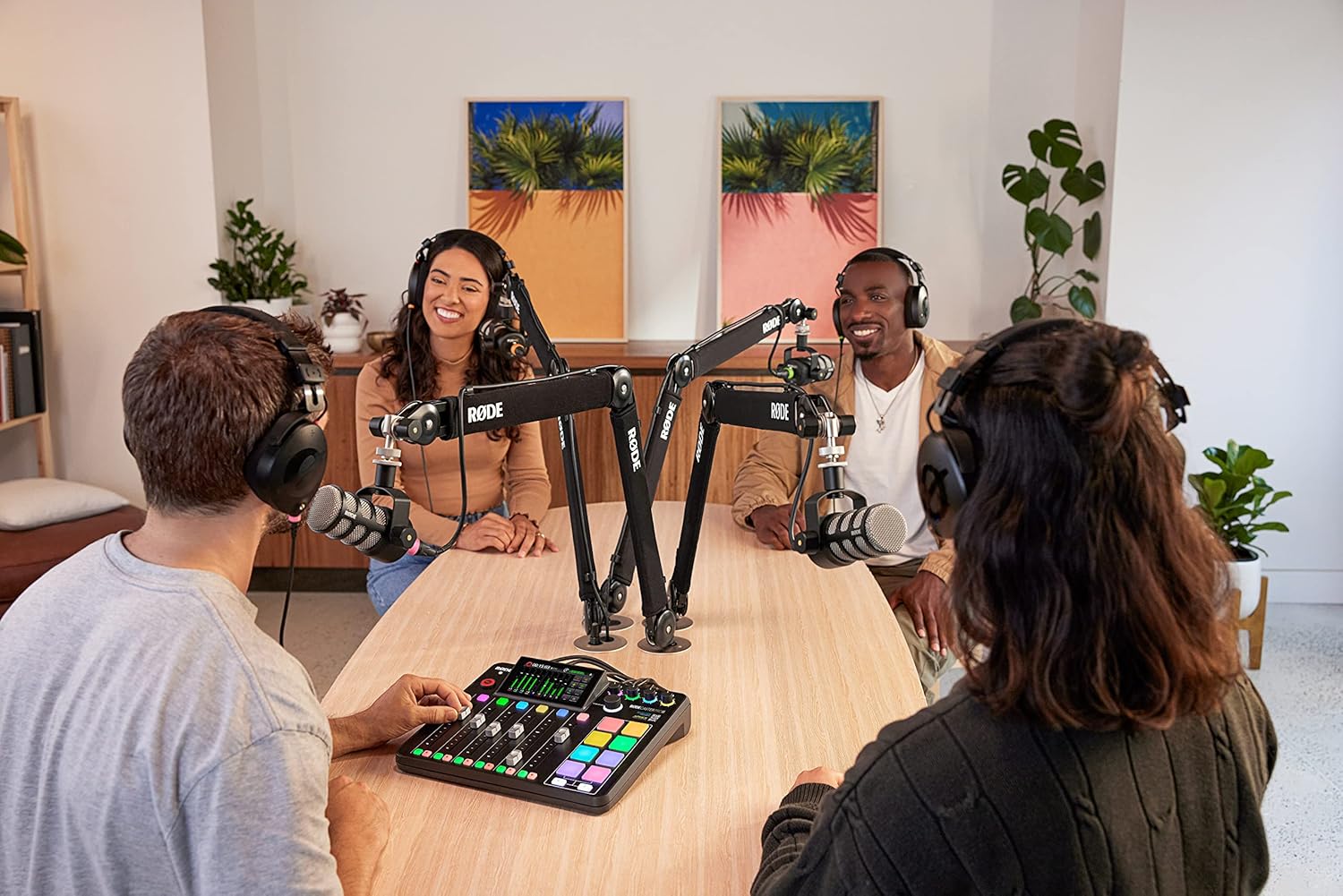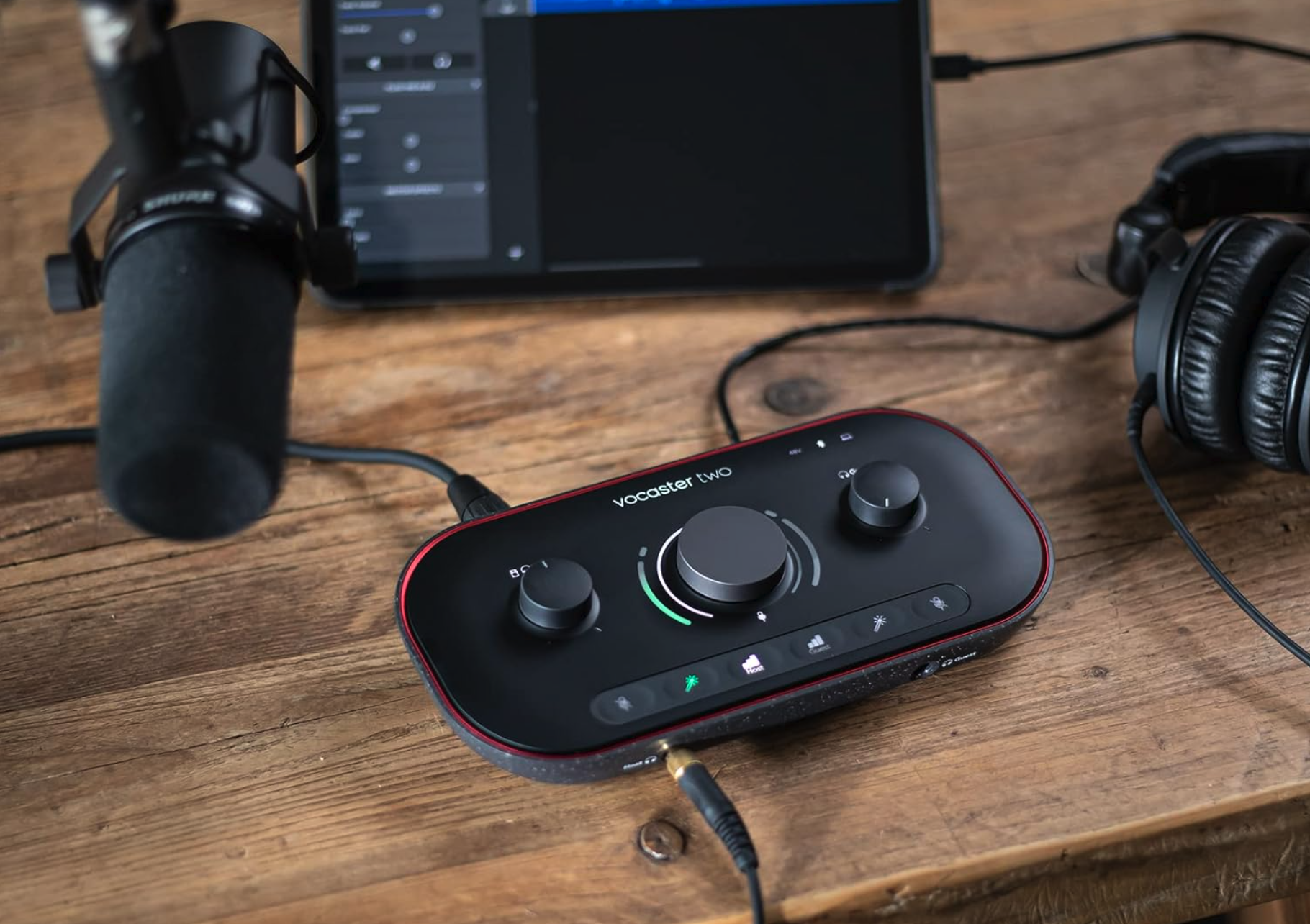The Best Audio Interfaces That Will Instantly Upgrade Your Podcast
 Click Here To Learn More About This Interface
Click Here To Learn More About This Interface
Why Interfaces Matter for Podcasters
Question podcasters ask: “Do I really need an audio interface if I already have a USB mic?”
Expert answer: A dedicated interface is the gateway to professional audio. Unlike a computer’s built-in sound card, it gives you clean microphone preamps, phantom power, accurate conversion, and zero-latency monitoring. If you want your podcast to sound like the shows you admire, this is the piece of gear that takes you from hobbyist to pro.
1. How Many Microphones Do I Really Need?
Question: “How many inputs should I buy?”
- Solo show: 1 input is enough (but 2 gives flexibility).
- Co-hosts/interviews: At least 2 inputs.
- Roundtables/panels: 4–8 inputs.
- Pro tip: Buy one size up, or pick a unit with ADAT expansion to future-proof.
Pros of fewer inputs: cheaper, smaller, easier to use.
Cons: you’ll need to upgrade if your show grows.
Recommendations:
- Solo: Focusrite Vocaster One (simple, podcast-ready).
- Duo: Scarlett 2i2 (4th Gen) (industry standard starter).
- Panel: Zoom PodTrak P4 (budget) or RØDECaster Pro II (high-end).
2. Do Preamps Really Make a Difference?
Question: “Why spend more on preamps?”
Answer: Preamps boost your mic signal. Better ones give higher clean gain (important for dynamic mics like the Shure SM7B) and less hiss.
- Budget pres: fine with condensers, may struggle with quiet dynamics.
- High-end pres: 70–76 dB of whisper-quiet gain (RØDECaster Pro II, Apollo Twin X, RME).
Pros of stronger preamps: no need for external boosters.
Cons: raises the price of the interface.
Recommendations:
- Budget: Audient EVO 4 (console-grade pres).
- Mid: UA Volt 476P (adds analog warmth/compression).
- High: RØDECaster Pro II (Revolution Preamps with 76 dB gain).
3. Which Features Actually Matter for Podcasters?
Question: “Do I need podcast-specific features?”
Answer: It depends on workflow.
- Podcast-centric features:
- Mix-minus (remote calls without echo)
- Loopback (capture computer/Zoom audio)
- Bluetooth/phone integration
- On-board SD card recording
- Sound pads for jingles/sponsors
- Auto gain & Clip Safe (prevent clipping mistakes)
- Traditional interfaces:
- Better suited for those who also record music/voiceovers.
- Clean sound, flexible routing, fewer built-ins.
Pros of podcast hubs: faster production, less post-work.
Cons: larger, pricier, less flexible for non-podcast use.
Recommendations:
- Podcast hub: RØDECaster Pro II or Zoom PodTrak P4.
- Traditional: Apollo Twin X (studio sound) or MOTU M4 (loopback + low latency).
4. Should I Worry About Latency and Connectivity?
Question: “What’s latency and will I notice it?”
Answer: Latency is the delay between speaking and hearing yourself. Cheap interfaces can feel “laggy.”
- USB-C: standard, reliable for most podcasters.
- Thunderbolt (UA Apollo): ultra-low latency, pricier.
- RME/Clarett+ drivers: praised for stability and ultra-low latency.
Pros of paying for better drivers: smoother live streams, no distracting delay.
Cons: higher cost, sometimes more complex setup.
5. Do I Need a Portable or Studio Setup?
Question: “Should I buy for travel or set up a home studio?”
- Portable/bus-powered: Scarlett 2i2, Audient EVO 4, Zoom PodTrak P4.
- Studio/external power: RØDECaster Pro II, Scarlett 18i20, Clarett+ 8Pre.
Pros of portable: lightweight, simple cabling.
Cons: limited inputs/features.
Pros of studio rigs: more inputs, built-in routing, reliable power.
Cons: bulkier, less travel-friendly.
6. Budget Breakdown: What to Expect at Each Tier
Budget (<$150)
- Pros: Affordable, simple, plug-and-play.
- Cons: Limited I/O, plastic builds, weaker preamps.
- Examples: M-Audio M-Track Duo, Behringer UMC22, Audient iD4 MkII.
Mid-Tier ($150–400)
- Pros: Stronger preamps, stable drivers, podcast features (loopback, phone input).
- Cons: More complexity, still limited to 2–4 mics unless expandable.
- Examples: Scarlett 2i2 (4th Gen), Vocaster Two, UA Volt 476P, MOTU M6.
High-End ($500+)
- Pros: Broadcast-quality preamps, ultra-low latency, DSP processing, expandable.
- Cons: Expensive, overkill for casual podcasters.
- Examples: RØDECaster Pro II, Apollo Twin X, RME Babyface Pro FS, Focusrite Clarett+ 8Pre.
7. Quick Scenario-Based Picks
- Solo creator: Scarlett 2i2 (4th Gen) or Vocaster One.
- Two hosts: Vocaster Two (auto-gain, Bluetooth).
- Mobile panel (4 mics): Zoom PodTrak P4.
- Studio panel (4 mics): UA Volt 476P or RØDECaster Pro II.
- Large panels (5–8 mics): Behringer UMC1820 (budget) or Scarlett 18i20/Clarett+ 8Pre (mid/high).
- Pro studio sound: Apollo Twin X or RME Babyface Pro FS.
8. Comparison Table: Top Picks by Tier and Mic Count
| Mic Inputs | Budget Pick (<$150) | Mid-Tier Pick ($150–400) | High-End Pick ($500+) |
|---|---|---|---|
| 1–2 Mics | Audient iD4 MkII – Great entry-level preamps, solid build, simple setup. | Focusrite Vocaster Two – Podcast-specific features (auto gain, Bluetooth, loopback). | UA Apollo Twin X – Pro converters, Unison preamps, real-time DSP. |
| 3–4 Mics | Zoom PodTrak P4 – 4 XLR inputs, sound pads, mix-minus, SD recording. | UA Volt 476P – 4 pres, analog warmth & compression built-in. | RØDECaster Pro II – All-in-one studio hub with 4 Revolution preamps, APHEX DSP, dual USB-C. |
| 5+ Mics | Behringer UMC1820 – Cheapest path to 8 XLR inputs; solid value. | Focusrite Scarlett 18i20 – 8 pres, loopback, ADAT expansion for 16 mics. | Focusrite Clarett+ 8Pre or RME Fireface UFX II – Premium preamps, expandable, rock-solid drivers. |
9. Beyond the Interface
- Microphones: Dynamics (SM7B, PodMic) for untreated rooms; condensers (Rode NT1) for treated spaces.
- Headphones: Closed-back to avoid bleed. (ATH-M20x → budget; DT770 → mid; Rode NTH-100 → pro).
- Accessories: Pop filters, mic arms, headphone amps for multiple listeners.
Final Verdict
Expert advice: Buy for the show you have plus one step ahead. Don’t overspend on features you’ll never use, but don’t limit your growth with too few inputs. For podcasters, the right interface is less about “best specs” and more about best workflow fit.
